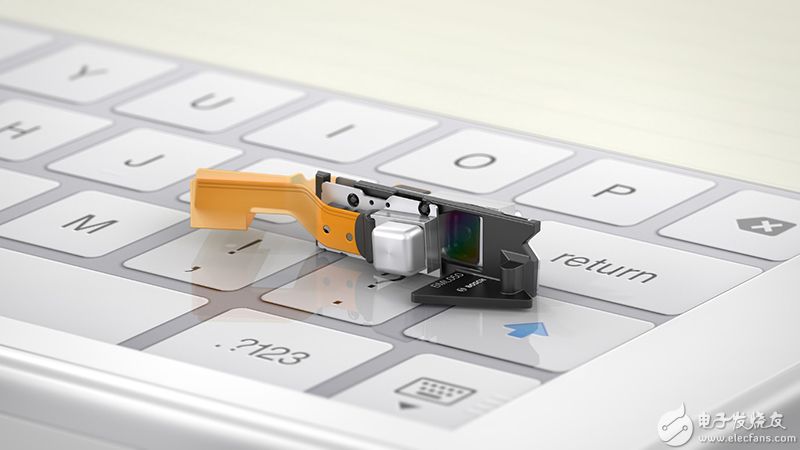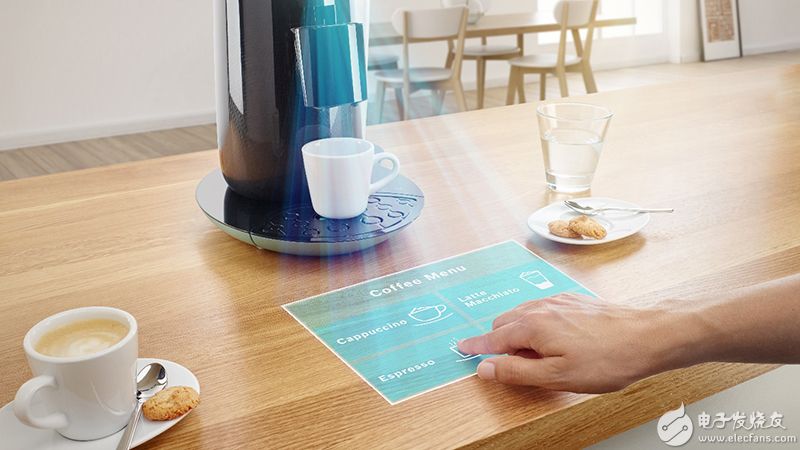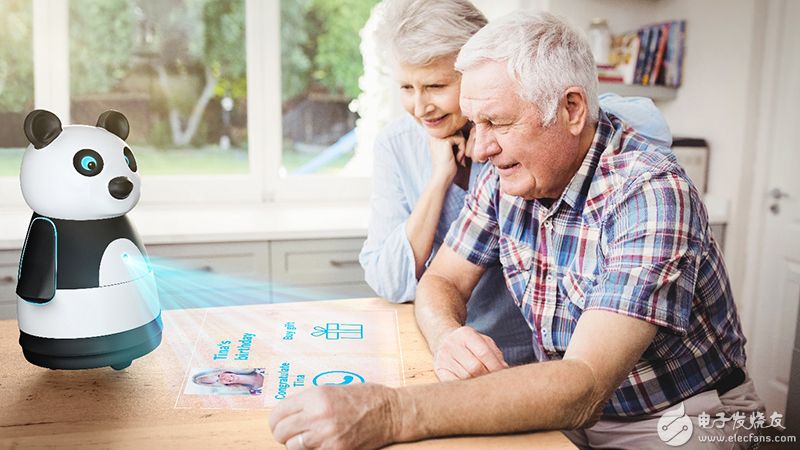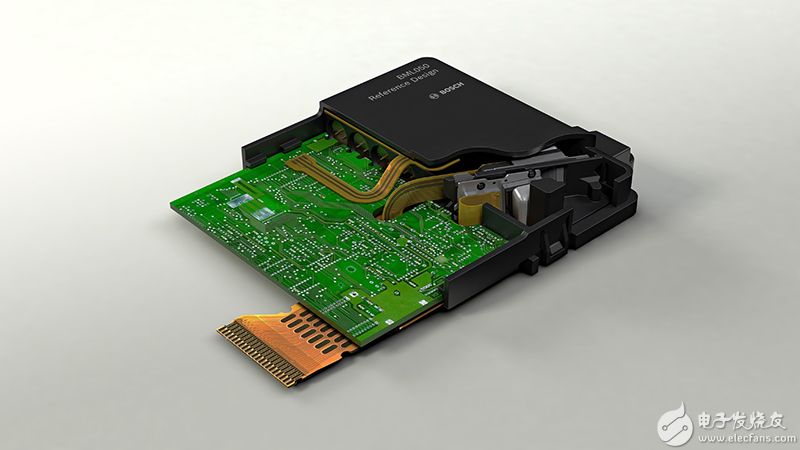**Author: Frank Fischer, Director of Marketing of Optical Microsystems, Bosch Sensortec GmbH**
The Internet of Things (IoT) is reshaping industries and enabling powerful business applications. But what does this mean for the everyday consumer? Imagine a world with fewer light switches, buttons, or LCD screens—where everything is driven by dozens of sensors and smart control systems. Intelligent thermostats, service robots, and other devices constantly listen and respond to our needs, offering intuitive, reliable, and seamless services. This is the future—the world of the Internet of Things.
These devices help us manage our environment and adapt to modern, complex lifestyles. It's an anti-intuitive idea: using more advanced technology to simplify life. In this context, the IoT User Interface (UI) becomes increasingly important, as it determines how users interact with these devices and what kind of feedback they receive.
Currently, we mostly interact with the world through one or more screens. Most people own at least one smartphone, which serves as a powerful UI for accessing a limited number of IoT functions. However, we anticipate that in the future, the UI will be "invisible" in the real world—appearing only when needed and disappearing when not in use.
Imagine if your device could project interactive virtual objects directly into the real world. That would be a game-changer! It would expand our interaction possibilities across both "Mixed Reality" and "Internet of Things" domains.
Sensors, devices, and IoT applications are everywhere. Yet, we believe that the way we interact with technology is undergoing a quiet revolution. Over the next decade, interactive laser projection is set to transform our current UI concepts and the way we engage with the world. What makes this exciting is that interactive projection is no longer just about big screens. Thanks to Bosch Sensortec’s BML050 micro scanner, it’s now a tangible reality.

Making the user interface simpler, more flexible, and more fun!
Take a standard home appliance like a coffee machine. At first glance, it might seem hard to improve. But consumers are always looking for something new, stylish, and different. What if the brewing process could be enhanced through a virtual UI, menus, images, and information? With a laser-projected interface, the design can be streamlined, replacing physical buttons and screens with a software-based experience.
Consumers love soft colors, simplicity, and smart features. The function of appliances should go beyond basic tasks like making espresso or toast. Appliances need to impress and be praised by users. Integrating a programmable virtual UI into home appliances can make even complex devices easier to use, allowing users to set up specific programs for tasks like cooking recipes or timed operations. This opens up a range of user-centric features and creates a strong market for early adopters.
Manufacturers understand this well, and the BML050 micro scanner perfectly meets their needs.
Controlling complex functions can be overwhelming. High-end coffee machines often come with so many features that the manual feels more complicated than navigating rush hour in Shanghai. Buttons, pop-up menus, sliders, dials, lights, buzzers, and radio tuning—what do we really need for a simple cup of coffee?
Interactive projection eliminates all those physical components, radically simplifying the operation of appliances like coffee machines, toasters, or dishwashers. Devices become smaller, more intuitive, and offer greater design flexibility, increasing their appeal to consumers. The projected UI adapts dynamically to the user’s task, showing only relevant information in an easy-to-understand format.
For example, a coffee machine can project large, clear images onto any surface—like a kitchen counter or table. Users simply click on the menu to select their preferred coffee style, cup size, or drink type. Everything is simple, convenient, and fun. Plus, the system supports intuitive accessibility, making daily tasks easier and more enjoyable.

Even if the UI gets dirty while cooking, it still works. No fingerprints on your clean appliances—no need to touch them. You can watch recipe videos or chat with friends using a virtual keyboard.
**Interactive Projection in Practice**
To be realistic, Bosch Sensortec has developed the BML050 microscanner, which includes two MEMS mirrors. When integrated into a complete projector reference design, it projects RGB color laser images onto any surface.
In addition to laser projection, the BML050 also supports gesture sensing. By measuring optical feedback from illuminated objects, the system detects user interactions with the projected content. Since optical feedback is directly tied to the projected light, no calibration between the projector and sensor is needed. Just open the app and press a virtual button!
**IoT Window**
Our mission isn’t just about improving coffee brewing. The truth is, hybrid reality based on interactive projection will find applications in a wide range of devices—many of which engineers haven't even imagined yet.
The traditional UI, filled with multiple LCD screens and buttons, is complex and limits the scalability of IoT. Consumers struggle with too many screens and controls. Interactive projection offers a dynamic, on-demand interface that provides larger, clearer, and more intuitive controls, hiding them when not needed. The result is a cleaner, more organized home environment, with fewer switches, buttons, or LCDs.
Appliances and robots will benefit from a simplified design. Product availability will increase, and manufacturers can add more value without being constrained by physical interfaces.
For consumers, a context-sensitive, menu-driven UI brings huge benefits. Paper manuals can be replaced by intuitive guidance through the UI, including video and images when needed. Visual assistance makes devices easier to use, especially for those who don’t want to read instructions, or for older adults and children learning to use new gadgets.
Interactive projection complements voice-controlled interfaces already popular in consumer electronics.
Moreover, projected images aren’t limited to UI functions. They can display videos, graphics, text, recipes, or YouTube cooking videos. They can also support social media access or video calls with family and friends.

**Wearables and More Possibilities**
The story of innovation in home appliances is just beginning. Interactive projection will also find its place in wearables and portable devices. Users want lightweight devices with large displays for managing complex apps. Interactive projection solves this challenge, and the BML050 micro scanner is compact enough for mobile use.
Microscanners are likely to be widely used in gaming, where projected images can be overlaid on real-world objects. Navigation tools are a natural fit, and the phrase “just know†could take on a new meaning.
As this technology advances, new applications beyond our imagination will emerge and soon become part of daily life. In a few years, smart glasses with a small interactive MEMS projector in the frame may hit the market, offering AR experiences or real-time information.
**Compact Module**
While these ideas are still in development, the MEMS mirroring technology behind them is already mature. The BML050 micro scanner is small and powerful, ideal for mobile and battery-powered devices. With advanced speckle suppression and precise control over MEMS lenses and laser diodes, it delivers high-quality projection. No focusing is required, and the vivid laser colors exceed human perception.
This miniature scanner is a ready-to-use solution, containing all MEMS lenses, control circuits, lasers, drivers, and power management in a single compact package. You can learn more about how the BML050 works on the Bosch Sensortec YouTube channel.
The distributor hasn’t released a reference design yet. Once it’s available, Bosch Sensortec will announce it on their website.

**Conclusion**
With the Bosch Sensortec BML050 pico projector, engineers will transform the way we create user interfaces in many products. Interactive projection will make daily life easier and more exciting for consumers, while removing many barriers for IoT applications. We’re excited to see how designers will use this technology and are already envisioning an era of great innovation!
**MEMS Sensor – The Foundation of the Internet of Things**
As a leading IoT company, Bosch offers innovative solutions for smart homes, smart cities, mobile internet, and connected industries. Leveraging expertise in sensor technology, software, and services, along with its own IoT cloud, Bosch provides customers with comprehensive cross-domain solutions. The company’s strategic goal is to create connected living experiences.
Smart MEMS sensor technology allows our homes, cities, vehicles, and workplaces to be perceived and interconnected. As more devices become connected, the demand for MEMS sensors increases. Beyond low cost, small size, and low power consumption, MEMS sensors must meet additional requirements.
Bosch Sensortec offers a broad portfolio of MEMS sensor and actuator solutions, well-positioned to meet these challenges and serve the IoT market.
**About Bosch Sensortec**
Bosch Sensortec GmbH, a wholly owned subsidiary of Robert Bosch GmbH, develops and supplies custom MEMS (Micro Electro Mechanical Systems) sensors and solutions for smartphones, tablets, wearables, and IoT products. Its portfolio includes 3-axis accelerometers, gyroscopes, geomagnetic sensors, integrated 6- and 9-axis sensors, environmental sensors, and a comprehensive software suite. Since its founding in 2005, Bosch Sensortec has become a leader in MEMS technology. Since 1995, Bosch has been a pioneer in MEMS sensors and a global market leader. To date, over 8 billion MEMS sensors have been sold worldwide. One out of every two smartphones uses Bosch Sensortec sensors.
Swan Neck Radiator
We offer a premium quality range of 520 mm Width Swan Neck Type Radiator in the market. This is sturdily fabricated using superior grade material and modern machinery in sync with set industrial norms and standards. 520 mm Width Swan Neck Type Radiator is known for its high efficiency, easy installation, low maintenance and better durability. This makes it stand apart from other radiators in the market. We offer this at highly pocket- friendly prices within a stipulated period of time.
Swan neck type of radiators are accessible with bend pipes at space restraint areas and can be made accessible with or without inserted sections provisional on the heat dissipation and oil quantity needed.
Swan Neck Radiator,Leakage Proof Swan Neck Radiator,Weather Proof Swan Neck Radiator,Anti Corrosion Swan Neck Radiator
Shenyang Tiantong Electricity Co., Ltd. , https://www.ttradiator.com